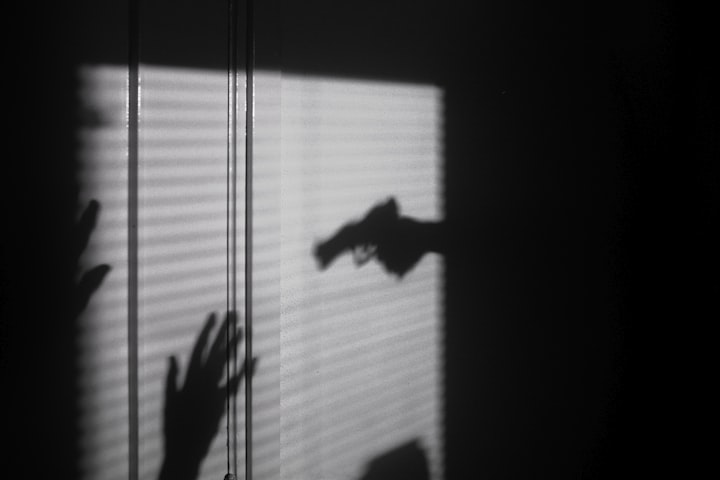
Richard Ramirez, infamously known as the Night Stalker, remains a haunting figure in the annals of true crime history. His reign of terror, characterized by a series of heinous crimes that terrorized Southern California during the mid-1980s, left an indelible mark on the collective psyche. This article delves into the life and crimes of Richard Ramirez, exploring the chilling details of his murderous spree, the impact on the communities he terrorized, his lack of remorse, and the circumstances leading to his eventual demise in June 2013.
In the mid-1980s, the citizens of Southern California were gripped by fear as a mysterious and malevolent force prowled the night. Richard Ramirez, the man who would become known as the Night Stalker, embarked on a spree of violence and terror that included burglaries, sexual assaults, and gruesome murders. His method of operation was as sinister as it was unpredictable, instilling a sense of dread that permeated the very fabric of the communities he targeted.
The Night Stalker's crimes knew no bounds as he left a trail of horror in his wake. His victims, ranging from young children to the elderly, faced unspeakable acts of violence. Ramirez showed no mercy, and the randomness of his attacks fueled the terror that gripped Southern California during those tumultuous years. The brutality of his crimes and the apparent lack of motive left investigators and the public alike grappling with the sinister nature of the Night Stalker.
As the body count rose and the fear intensified, Southern California became a city under siege. Law enforcement agencies were thrust into a desperate manhunt to capture the elusive Night Stalker. The streets were on edge, and residents lived in a state of constant anxiety, locking their doors and windows, haunted by the fear that Ramirez could strike at any moment. The Night Stalker's ability to elude capture only heightened the sense of vulnerability and paranoia that pervaded the region.
The Night Stalker's reign of terror came to a dramatic end on August 31, 1985, when an alert group of citizens in East Los Angeles recognized Ramirez from his widely circulated police sketch. A tense confrontation ensued as the crowd detained Ramirez until law enforcement arrived to make the arrest. The capture marked the conclusion of a dark chapter in Southern California's history, providing a semblance of relief to a community scarred by fear.
The arrest of Richard Ramirez set the stage for a high-profile trial that would expose the gruesome details of his crimes. The proceedings offered a harrowing glimpse into the mind of a remorseless killer who reveled in the pain and suffering he inflicted upon his victims. In 1989, Ramirez was convicted on 13 counts of murder, 5 counts of attempted murder, 11 counts of sexual assault, and 14 counts of burglary, sealing his fate as one of the most notorious criminals of his time.
Following his conviction, Richard Ramirez was sentenced to death and confined to California's death row. For 24 years, he lived in the shadows of the legal system, awaiting the execution that would bring closure to the families of his victims. The grim reality of life on death row did little to alter Ramirez's demeanor, as he maintained a stoic and unrepentant attitude toward the horrors he had unleashed upon innocent lives.
Throughout his time on death row, Richard Ramirez never expressed remorse for his crimes. His demeanor remained defiant, and his interactions with the media and prison staff provided a glimpse into the disturbing psyche of a man who seemed impervious to the suffering he had caused. The absence of remorse became a chilling aspect of Ramirez's legacy, underscoring the depth of his depravity and the enigmatic nature of his motivations.
As the years passed, the once-feared Night Stalker faced a new and unexpected adversary—lymphoma. In June 2013, Richard Ramirez succumbed to complications related to his battle with cancer, bringing an end to his life of infamy. The circumstances surrounding his death raised questions about the nature of justice and whether Ramirez's demise by natural causes provided a fitting conclusion to the saga of the Night Stalker.
Richard Ramirez's reign of terror and the subsequent legal proceedings have left an enduring mark on the true crime genre. The Night Stalker's case continues to captivate the public's imagination, inspiring documentaries, books, and television series that seek to unravel the enigma of a killer who reveled in the macabre. The enduring fascination with Ramirez's crimes prompts ongoing discussions about the nature of evil, the limits of justice, and the collective trauma experienced by the communities he victimized.
The legacy of Richard Ramirez, the Night Stalker, is one tainted by the profound and lasting impact of his crimes. From the terror that gripped Southern California to the lack of remorse that characterized his time on death row, Ramirez's story raises unsettling questions about the nature of criminality and the boundaries of human depravity. As society grapples with the enduring fascination with true crime and the haunting legacy of the Night Stalker, the name Richard Ramirez serves as a chilling reminder of the darkness that can reside in the human soul.






Comments
There are no comments for this story
Be the first to respond and start the conversation.